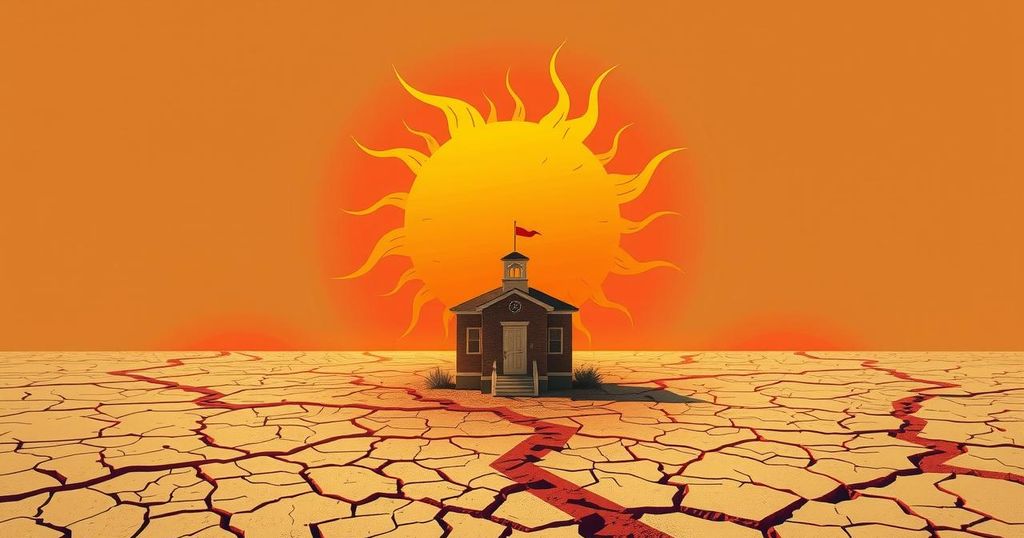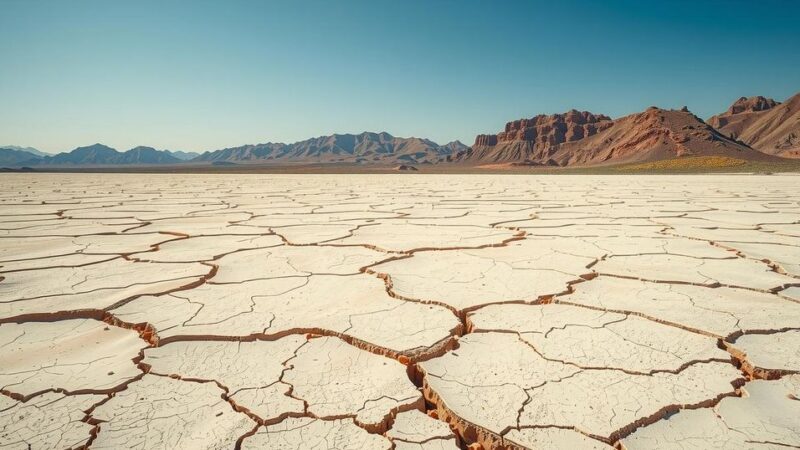In 2024, extreme heat affected education in Belém, Brazil, with students unable to concentrate due to discomfort in classrooms. A study indicated that many Brazilian schools are in heat islands, revealing inequalities in educational environments. Research shows that higher temperatures correlate with decreased learning outcomes, pressing the need for infrastructure improvements and nature-based solutions to combat climate impacts on education.
In 2024, Belém, Brazil, faced extreme heat for 212 days, with temperatures exceeding average levels, making it the second hottest city in the country. João Victor da Costa da Silva, a 15-year-old student, noted how the heat hindered concentration and learning due to discomfort in classrooms. Despite efforts, such as using fans and keeping windows open, students struggled with poor air quality, particularly on days affected by smoke from Amazonian forest fires.
A study by the Alana Institute revealed that 64% of schools across major Brazilian cities are situated in zones with temperatures at least 1°C above the urban average. In a third of state capitals, many schools are within heat islands, where surface temperatures exceed urban averages by 3.5°C. Maria Isabel Barros, an expert from Alana, explained that schools in these hot zones face significant challenges and highlight stark inequalities faced by students in different communities.
Barros reported alarming disparities in school demographics in heat islands; 16% of schools with predominantly White students are in heat islands compared to 36% for predominantly Black schools, thus illustrating the impact of environmental racism. The findings underscore that approximately 370,000 Kindergarten and elementary students are enrolled in schools located in high-risk areas, often near slums with limited resources.
Cities in the North and Northeast regions of Brazil exhibit the most significant concentrations of schools in heat islands, coinciding with the lowest Human Development Index (HDI) levels. For example, in Manaus, 77.7% of schools are in higher temperature areas, presenting alarming implications for education amid rising heat.
Research from the World Bank indicates that every additional day of extreme heat, above 26.7°C, leads to decreased learning, equating to a loss of 1.08 school days. In Brazil, a 1°C increase in temperature prior to educational assessments correlates with a decline in test scores, which can affect students disproportionately based on socioeconomic factors.
Ricardo Henriques from the Unibanco Institute emphasized the necessity for adequate school infrastructure to mitigate extreme heat. He cited Piauí state’s commitment to air conditioning schools by 2026 as a proactive measure to maintain learning conditions. However, smaller municipalities often lack the resources to implement similar systems.
Barros suggests nature-based solutions, such as incorporating greenery through architectural changes and tree planting, as cost-effective alternatives. Initiatives like those by the NGO Formigas de Embaúba, which promotes tree planting in schools to alleviate urban heat, demonstrate community-driven efforts to address climate challenges within education.
Karla Braga from CoJovem elaborates on the intergenerational impacts of unchecked extreme heat on young people’s education, stressing that infrastructure aware of climate conditions is vital for students’ futures. She noted the high rate of school absenteeism due to heat, which ultimately diminishes educational attainment.
Mônica Dias Pinto from UNICEF highlighted the dire consequences of climate change on educational access, predicting that climate crises could disrupt the education of 250 million children by 2024. Pinto reinforced the urgency of addressing these issues, as vulnerable communities face compounded challenges amid worsening climate conditions.
Belém City Hall was contacted for comments on these findings but had not yet responded to inquiries regarding the extensive impact of extreme heat on educational institutions in the region.
Extreme heat significantly hampers educational outcomes in Brazil, particularly in vulnerable areas. With a high percentage of schools located in heat islands, the disparities in educational access and climate impacts link closely to social inequalities. Promoting infrastructure that mitigates heat stress and fostering nature-based solutions can help protect students’ learning environments, addressing the urgent challenges presented by the ongoing climate crisis.
Original Source: valorinternational.globo.com






